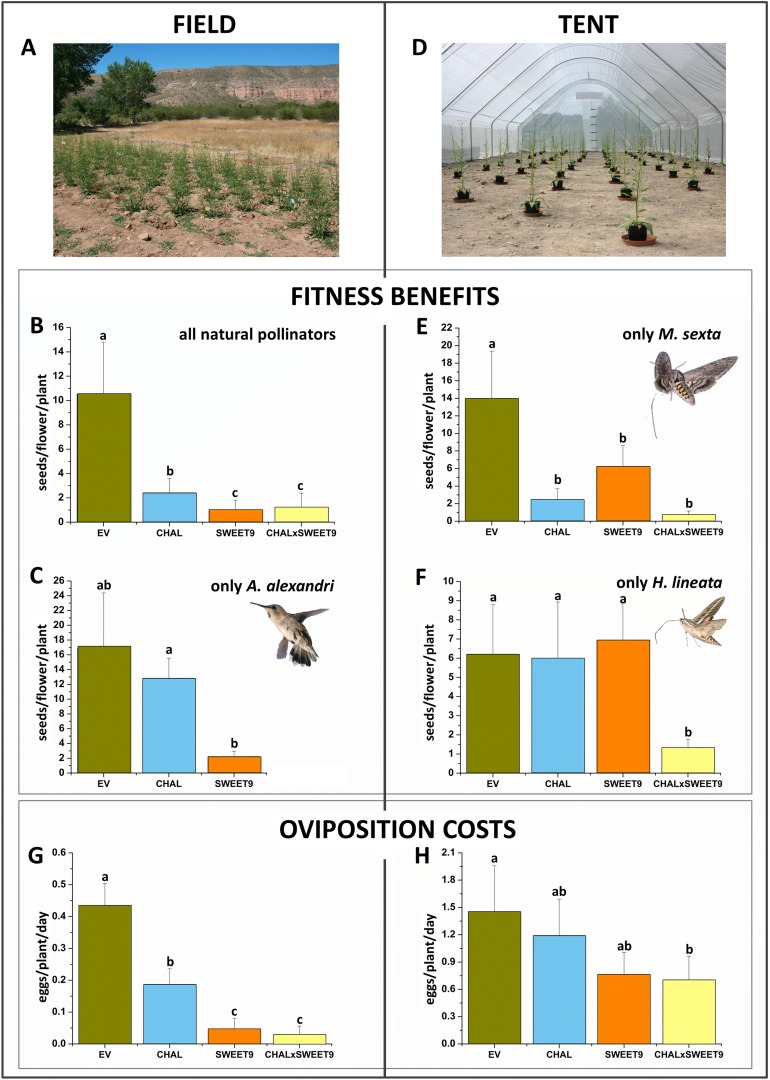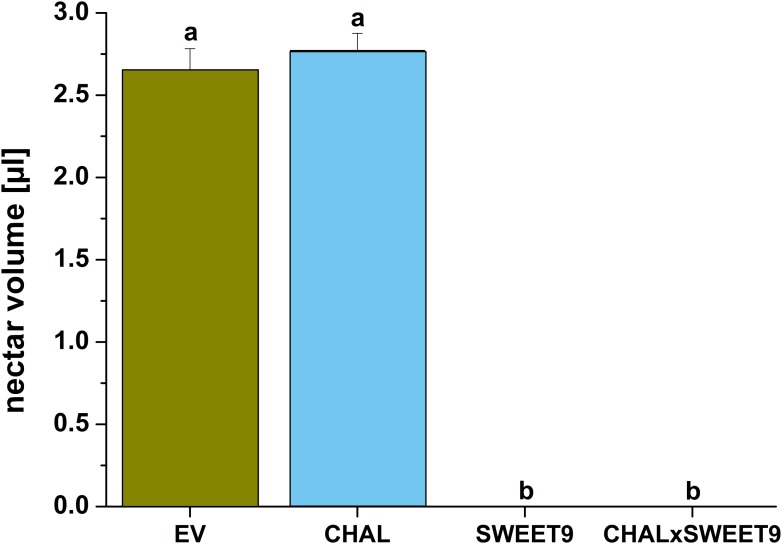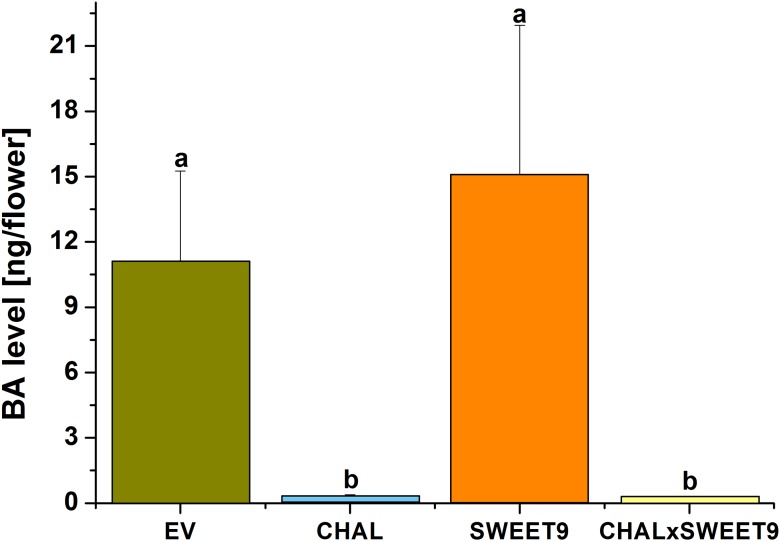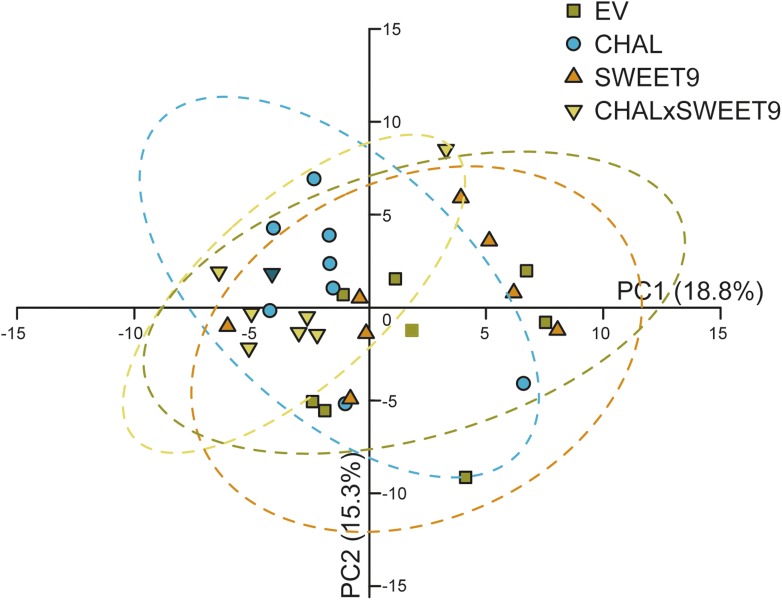Figure 2. Benefits and cost of floral scent and nectar, as revealed from pollination and oviposition experiments in the field and tent.
Means +SEM of either seed production of antherectomized flowers or oviposition by Manduca sexta on transformed plants silenced in the production of floral scent (CHAL), floral nectar (SWEET9), or both (CHALxSWEET9) in comparison to empty vector control plants (EV). (A) Field plot in N. attenuata's native habitat at the Lytle ranch preserve in Santa Clara, Utah, USA. (B) Seeds sired from pollen transferred by the native community of floral visitors over the complete life span of a flower (3 days). (C) Exclusive pollination by Archilochus alexandri hummingbirds in the field during a 12 hr day. (D) Tent set-up used for single species pollinations in Isserstedt, Germany. Seeds sired from pollination of single M. sexta (E) or Hyles lineata (F) individuals during a 9-hr night. Eggs oviposited per transformed line (n = 10) on different days by the native community of M. sexta in the field (G) or by single individuals in the tent (H). Letters indicate significant differences inferred by a Friedman signed rank test p < 0.05.




